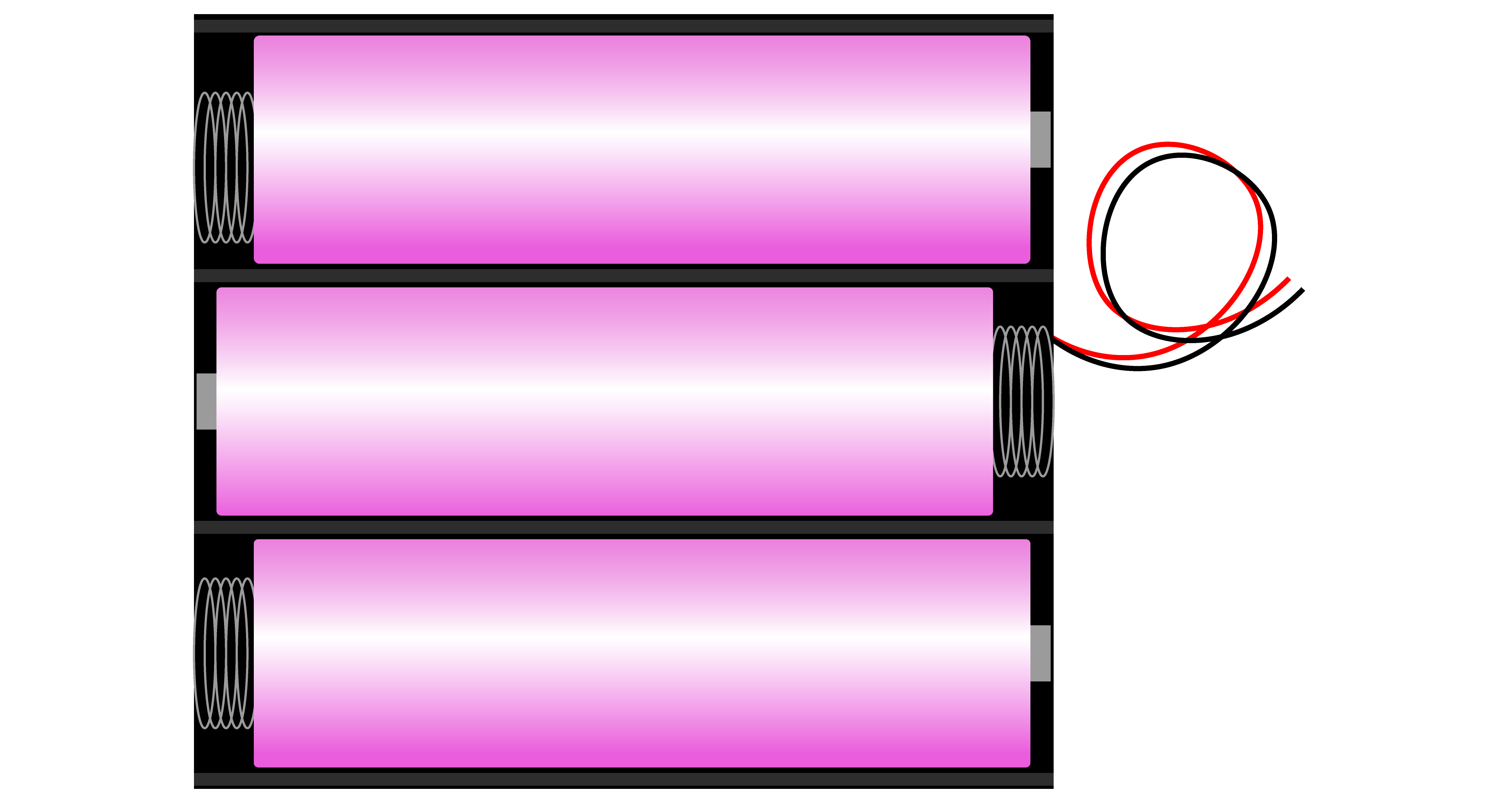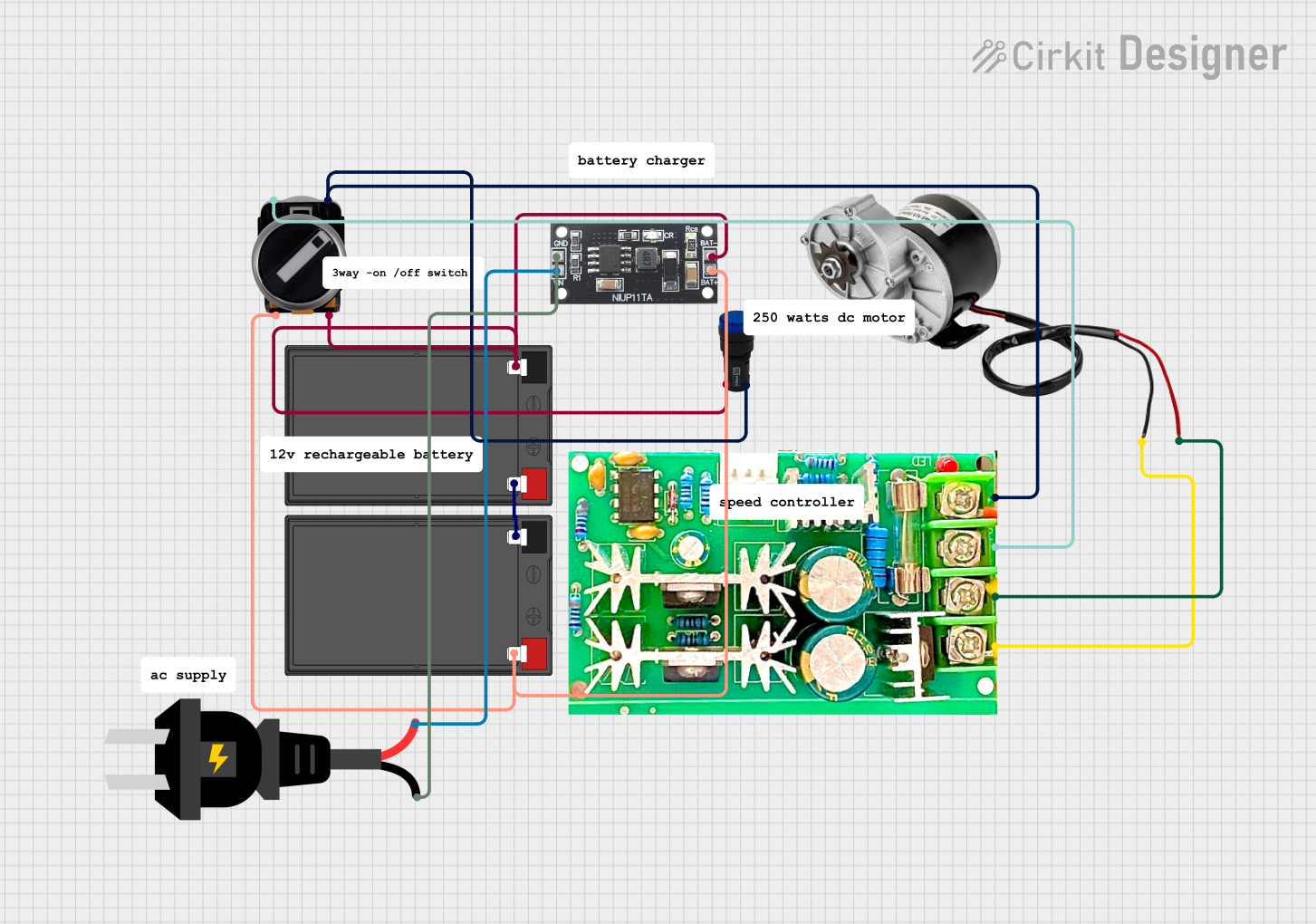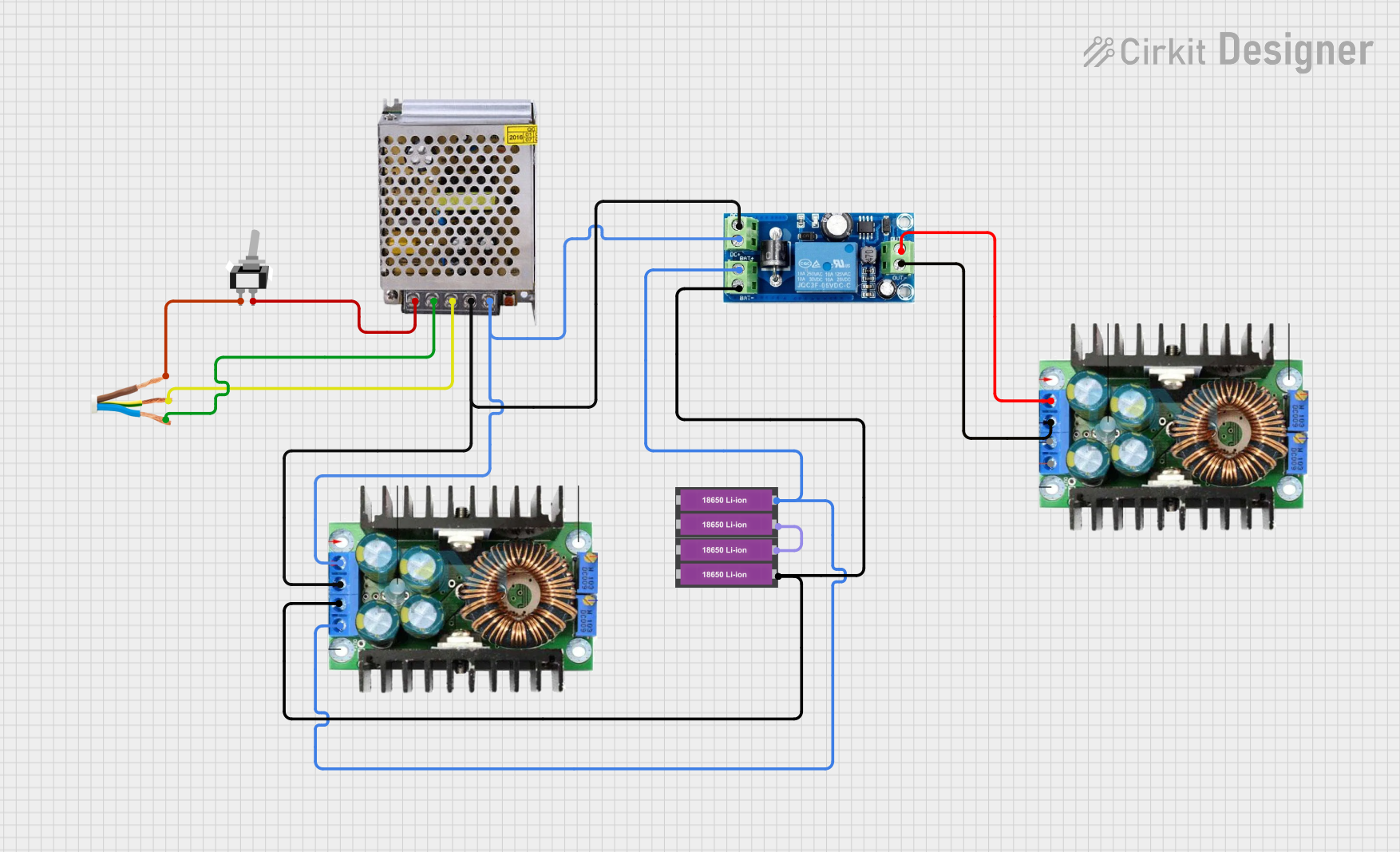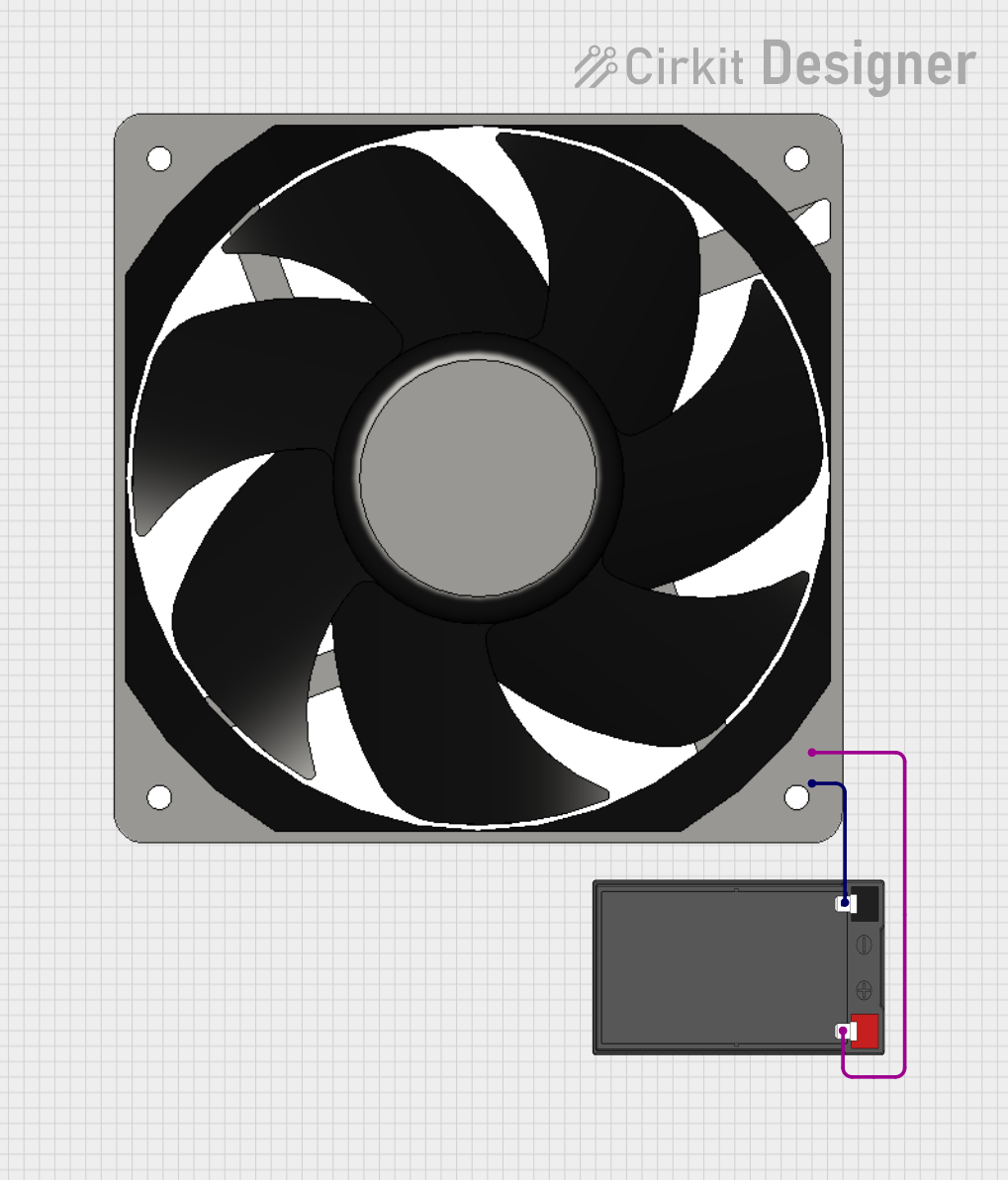
How to Use battery 12v: Examples, Pinouts, and Specs

 Design with battery 12v in Cirkit Designer
Design with battery 12v in Cirkit DesignerIntroduction
A 12-volt battery is a versatile power source designed to provide a stable 12V DC output. Manufactured by Battery (Part ID: 11), this component is available in both rechargeable and non-rechargeable variants. It is widely used in automotive systems, portable electronics, backup power supplies, and various electronic circuits. Its compact design and reliable energy output make it a popular choice for powering devices that require a steady voltage supply.
Explore Projects Built with battery 12v

 Open Project in Cirkit Designer
Open Project in Cirkit Designer
 Open Project in Cirkit Designer
Open Project in Cirkit Designer
 Open Project in Cirkit Designer
Open Project in Cirkit Designer
 Open Project in Cirkit Designer
Open Project in Cirkit DesignerExplore Projects Built with battery 12v

 Open Project in Cirkit Designer
Open Project in Cirkit Designer
 Open Project in Cirkit Designer
Open Project in Cirkit Designer
 Open Project in Cirkit Designer
Open Project in Cirkit Designer
 Open Project in Cirkit Designer
Open Project in Cirkit DesignerCommon Applications and Use Cases
- Automotive applications (e.g., car batteries, motorcycles, and RVs)
- Portable electronic devices
- Uninterruptible power supplies (UPS)
- Solar energy storage systems
- Robotics and DIY electronics projects
- Emergency lighting systems
Technical Specifications
Below are the key technical details for the 12V battery:
| Parameter | Specification |
|---|---|
| Nominal Voltage | 12V DC |
| Capacity Range | 1.2Ah to 200Ah (varies by model) |
| Chemistry Type | Lead-acid, Lithium-ion, or NiMH |
| Rechargeable | Yes (for rechargeable variants) |
| Maximum Charging Voltage | 14.4V to 14.8V (for rechargeable types) |
| Discharge Cutoff Voltage | 10.5V (typical) |
| Operating Temperature | -20°C to 60°C (varies by chemistry) |
| Dimensions | Varies by capacity and model |
| Weight | Varies by capacity and model |
Pin Configuration and Descriptions
The 12V battery typically has two terminals:
| Pin/Terminal | Description |
|---|---|
| Positive (+) | Connects to the positive side of the circuit |
| Negative (-) | Connects to the ground or negative side |
Note: Ensure proper polarity when connecting the battery to avoid damage to the circuit or the battery.
Usage Instructions
How to Use the Component in a Circuit
- Identify the Terminals: Locate the positive (+) and negative (-) terminals on the battery.
- Connect to the Circuit:
- Connect the positive terminal to the positive input of your circuit.
- Connect the negative terminal to the ground or negative input of your circuit.
- Use a Fuse: For safety, include a fuse in series with the positive terminal to protect against overcurrent.
- Charging (for Rechargeable Batteries):
- Use a compatible charger designed for the battery's chemistry (e.g., lead-acid or lithium-ion).
- Follow the manufacturer's recommended charging voltage and current limits.
- Monitor Voltage: Use a multimeter or voltage sensor to ensure the battery voltage remains within the safe operating range.
Important Considerations and Best Practices
- Polarity: Always double-check the polarity before connecting the battery to a circuit.
- Overcharging: Avoid overcharging rechargeable batteries, as it can lead to overheating or damage.
- Discharge Limits: Do not discharge the battery below its cutoff voltage to prevent damage.
- Storage: Store the battery in a cool, dry place when not in use. Rechargeable batteries should be stored at 40-60% charge for optimal lifespan.
- Safety: Avoid short-circuiting the terminals, as this can cause overheating or fire.
Example: Connecting a 12V Battery to an Arduino UNO
Below is an example of how to power an Arduino UNO using a 12V battery:
Circuit Diagram
- Connect the positive terminal of the battery to the VIN pin of the Arduino UNO.
- Connect the negative terminal of the battery to the GND pin of the Arduino UNO.
Sample Code
// This code demonstrates a simple LED blink program for Arduino UNO
// powered by a 12V battery. Ensure proper connections before running.
const int ledPin = 13; // Built-in LED pin on Arduino UNO
void setup() {
pinMode(ledPin, OUTPUT); // Set the LED pin as an output
}
void loop() {
digitalWrite(ledPin, HIGH); // Turn the LED on
delay(1000); // Wait for 1 second
digitalWrite(ledPin, LOW); // Turn the LED off
delay(1000); // Wait for 1 second
}
Note: Ensure the battery voltage does not exceed 12V to avoid damaging the Arduino UNO's voltage regulator.
Troubleshooting and FAQs
Common Issues and Solutions
| Issue | Possible Cause | Solution |
|---|---|---|
| Battery not powering the circuit | Incorrect polarity or loose connections | Verify connections and polarity |
| Battery overheating during use | Overcurrent or short circuit | Use a fuse and check for short circuits |
| Battery not charging (rechargeable) | Faulty charger or incorrect voltage | Use a compatible charger |
| Rapid battery discharge | High load or aging battery | Reduce load or replace the battery |
| Low voltage output | Battery is discharged | Recharge the battery (if rechargeable) |
FAQs
Can I use a 12V battery to power a 5V device?
- Yes, but you will need a voltage regulator or DC-DC converter to step down the voltage to 5V.
How do I know if my battery is fully charged?
- Measure the voltage with a multimeter. A fully charged 12V lead-acid battery typically reads around 12.6V to 12.8V.
Can I connect multiple 12V batteries together?
- Yes, you can connect them in series to increase voltage or in parallel to increase capacity. Ensure all batteries are of the same type and capacity.
What is the lifespan of a 12V battery?
- The lifespan depends on the battery type and usage. Lead-acid batteries typically last 3-5 years, while lithium-ion batteries can last 5-10 years.
By following this documentation, you can safely and effectively use a 12V battery in your projects and applications.